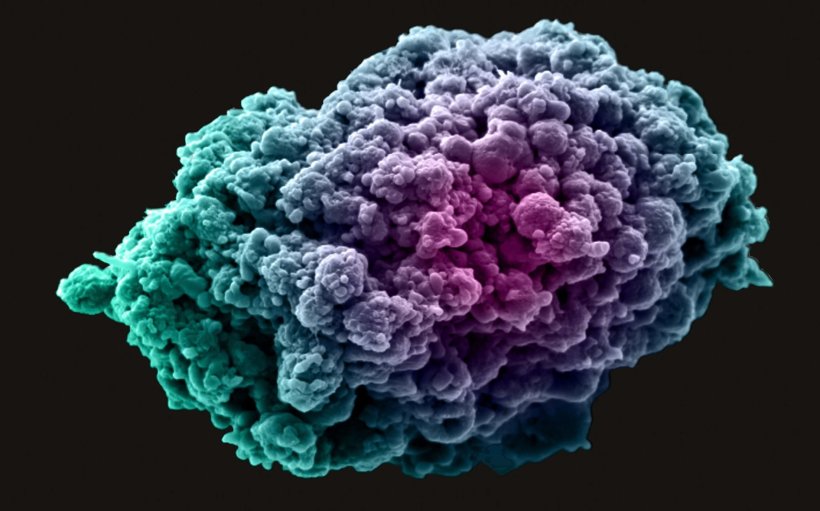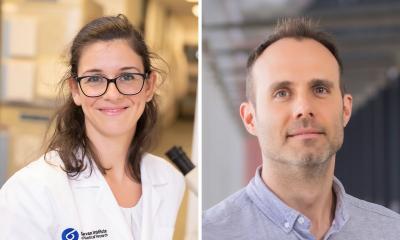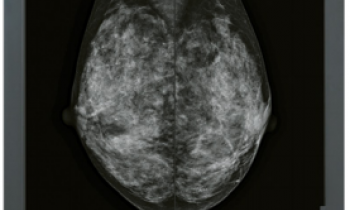
Image credits: Khuloud T. Al-Jamal, David McCarthy & Izzat Suffian (CC BY 4.0)
News • Secondary tumours
Scientists discover new way to help prevent breast cancer ‘time bomb’
Scientists have discovered why breast cancer cells that have spread to the lungs may ‘wake up’ following years of sleep - forming incurable secondary tumours.
Their research, funded by Breast Cancer Now, reveals the mechanism that triggers this breast cancer 'time bomb' – and suggests a strategy to defuse it.
Patients with oestrogen receptor positive (ER+) breast cancer – the most common type – have a continued risk of their cancer recurring in another part of their body for many years or even decades after their original diagnosis and treatment. When breast cancer cells spread from the first cancer in the breast to other parts of the body it is called secondary or metastatic breast cancer and although treatable, it can’t be cured.
The new research, published in the journal Nature Cancer, showed how molecular changes within the lung that occur during ageing can support the growth of these secondary tumours.
Cancer cells can survive in distant organs for decades by hiding in a dormant state. We’ve discovered how aging lung tissue can trigger these cancer cells to ‘reawaken’ and develop into tumours
Frances Turrell
The team at The Institute of Cancer Research, London, found that the PDGF-C protein, which is present in the lung, plays a key role in influencing whether inactive breast cancer cells stay asleep or ‘wake up’. They discovered that if the level of PDGF-C increases, which is more likely in an ageing lung or when its tissue becomes damaged or scarred, it can cause the dormant cancer cells to grow and develop into secondary breast cancer.
The researchers then explored whether blocking PDGF-C activity could help prevent the ‘reawakening’ of these cells and the growth of secondary tumours. Working with mice with ER+ tumours, researchers in the Breast Cancer Now Toby Robins Research Centre at the ICR targeted PDGF-C signalling with an existing cancer growth blocker called imatinib, which is currently used to treat patients with chronic myeloid leukaemia. The mice were treated with the drug both before and after the tumours had developed. For both groups, the cancer growth in the lung was significantly reduced.
Up to 80% of primary breast cancers are ER+ and there are around 44,000 cases in the UK each year. Dr Frances Turrell, postdoctoral training fellow in the Division of Breast Cancer Research at The Institute of Cancer Research, London, said: "Cancer cells can survive in distant organs for decades by hiding in a dormant state. We’ve discovered how aging lung tissue can trigger these cancer cells to ‘reawaken’ and develop into tumours, and uncovered a potential strategy to ‘defuse’ these ‘time bombs’. We now plan to better unpick how patients might benefit from the existing drug imatinib, and in the long term aim to create more specific treatments targeted at the ‘reawakening’ mechanism."
Professor Clare Isacke, Professor of Molecular Cell Biology at The Institute of Cancer Research, London, said: “This is an exciting stride forward in our understanding of advanced breast cancer – and how and why breast cancer cells form secondary tumours in the lungs. Next we need to pin point when these age-related changes happen and how they vary between people, so that we can create treatment strategies that prevent cancer cells ‘reawakening’.”
Dr Simon Vincent, director of research, support and influencing at Breast Cancer Now, which funded the study, said: “We know that for years after finishing breast cancer treatment many women fear the disease returning. With an estimated 61,000 people living with secondary breast cancer in the UK, more research to understand and treat it is vital. This exciting discovery brings us a step closer to understanding how we can slow down or stop the development of ER+ secondary breast cancer in the lung. It has the potential to benefit thousands of women living with this ‘time bomb’ in the future, ensuring fewer patients receive the devastating news the disease has spread.”
Source: Institute of Cancer Research
15.03.2023











